How To Forecast How Much Your Contractors Are Costing You

We Help Your Agency Reach New Heights
Switch from multiple tools and spreadsheets to one scalable agency management system.
If you’re an agency, chances are that you work with contractors.
It’s also very likely that you struggle to understand how much they’re taking from your revenue pie—today, and in the future.
Working with contractors brings a lot of flexibility. You can hire them if you have enough work for them, unlike full-time employees which come with more responsibility. But there are financial effects when you hire freelancers, and this is exactly why you need to learn to forecast how much your contractors are costing you.
To do that, first you need to discover your AGI or Agency Gross Income. Once you have your AGI and know how much your freelancers cost you, you can find out “the only money that’s yours to keep,” as Drew McLellan of the Agency Management Institute would say.
What is Agency Gross Income?
Agency Gross Income includes all the income you’ve billed to clients without the cost of external goods or services you have to pay for. Examples of external goods can be media buying or the equipment you’ve billed your clients with a markup. Now let’s get even more specific by taking a look at revenue and contractors.
Let’s say you’re a creative agency that creates advertisements. You’ll charge copywriting for those ads, graphic design, project management, as well as all the equipment that you rented and invoiced to your client. Realistically, that revenue that you received for equipment isn’t your own revenue, it’s just a transaction that made its way through your agency. You didn’t really make that money, nor will it stay on your account.
The same logic applies for freelancers. If you’re a freelancer that hired a copywriter outside of your small business and charged their fee to the client, you did see that revenue on your account, but it’s not your direct revenue, because, of course, you’re handing it right over to your fellow freelance copywriter.
Now let’s take a look at the effect that hiring contractors has on your business.
Separating Revenue: With and Without Contractors
To get a picture of your revenue with and without the cost of your contractors, the first step would be to analyze your past projects. Compare revenue you’ve earned for in-house services vs. billings for contractors. You might be surprised with the result.
This first report shows you just how much revenue you get to keep for yourself because it splits revenue between services revenue which you’ve earned with in-house work and external expenses.
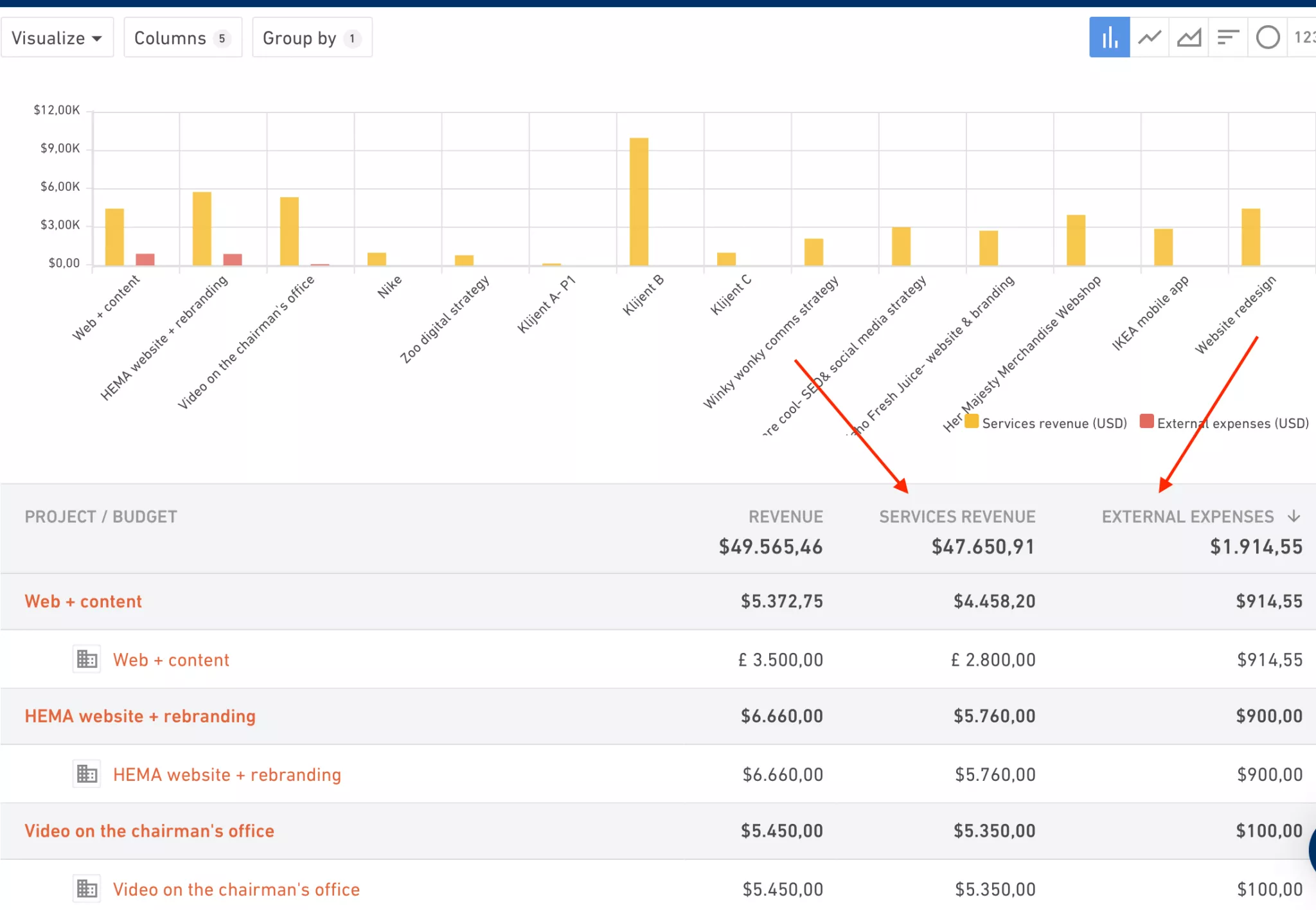
You can look at the “billing” of your contractors separately and analyze whether you’ve made a profit on it by taking look at the mark-up.
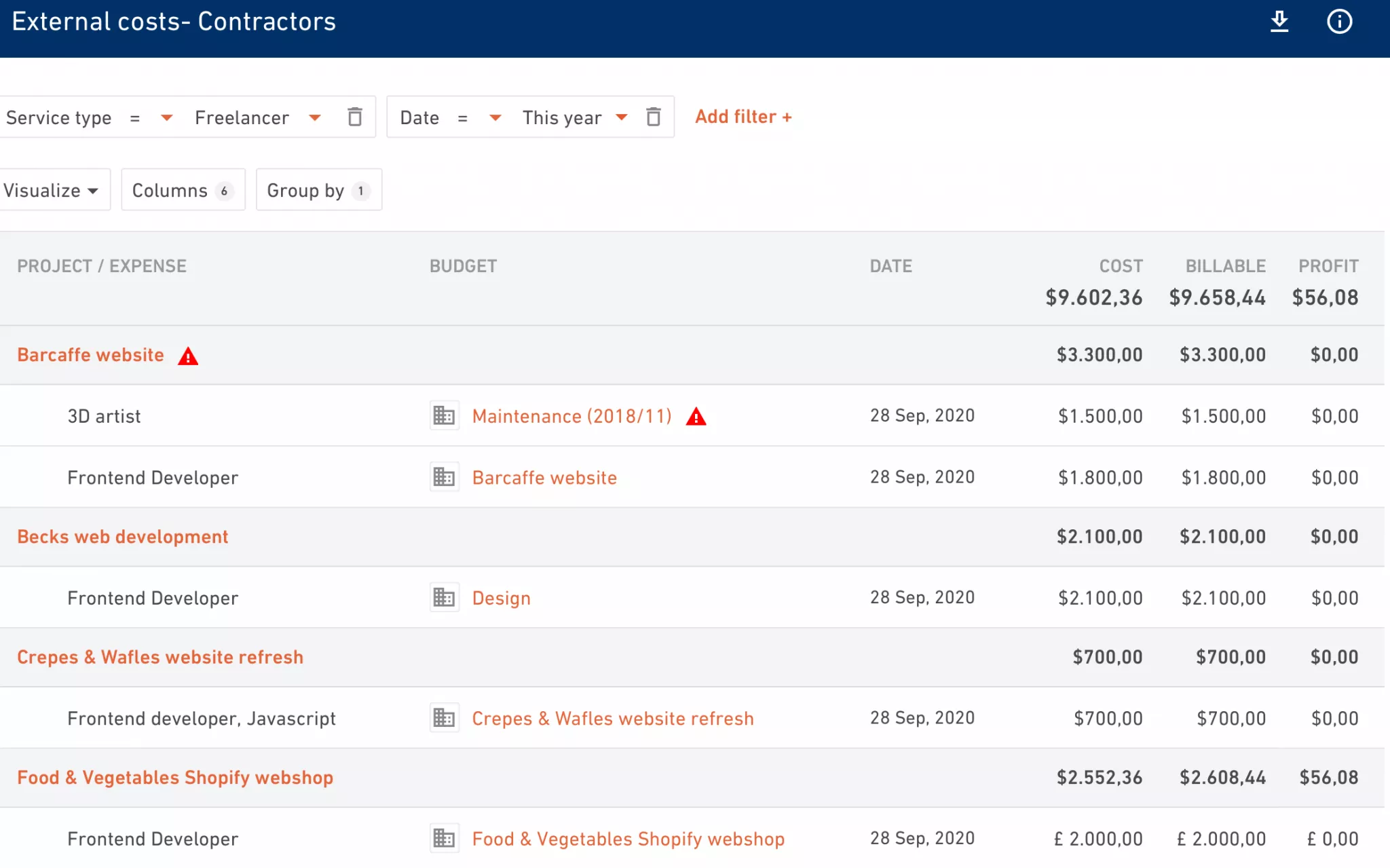
In this case, the agency is billing 23 times more for in-house services than those outsourced. This is a solid situation. However, you can also notice something here: for most of these projects, contractors were used for front-end development. That can mean two things—it’s more profitable to outsource that skill, or perhaps they need to grow that team.
Note: these reports were made using Reports, Productive’s agency BI tool.
Is It More Profitable to Outsource or Deliver Agency Service In-house?
This is a question you should ask yourself. Data rarely lies, so look into your previous projects and compare the data.
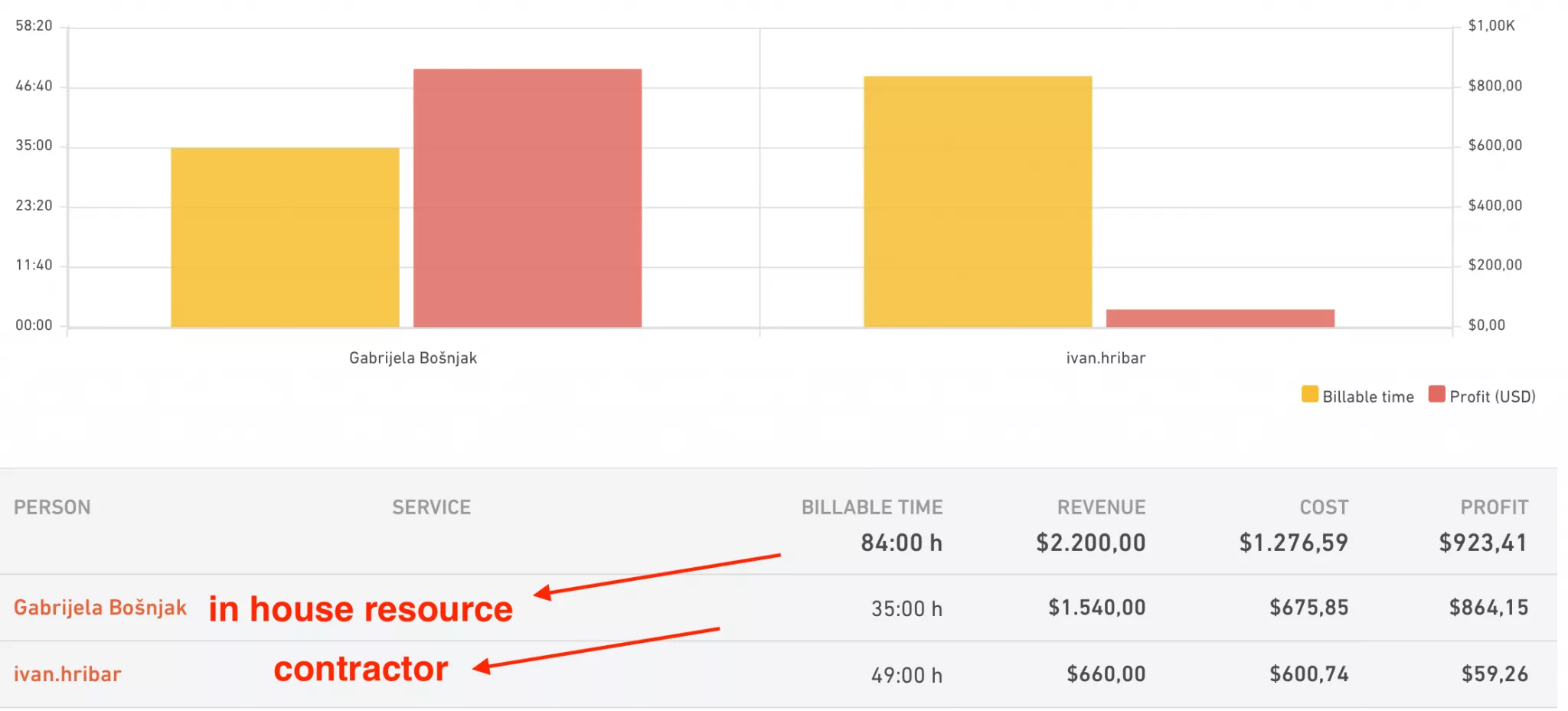
Sometimes you just don’t have enough resources to deliver all the work needed. However, if you see there’s a big difference in profit when delivering in-house, that’s an opportunity for extra cash in the future. That’s where you should be investing next: in growing your team.
Finally, How Can I Forecast How Much the Contractors are Costing Me?
Imagine you’re starting a new project and you’re curious to see how much profit you’d make if you delivered everything by yourself vs. hiring a contractor. Using Forecasting and Reports, Productive’s newest releases, you can build these what-if scenarios.
You would plan the internal resources you want to engage on the project and forecast the end profit margin.
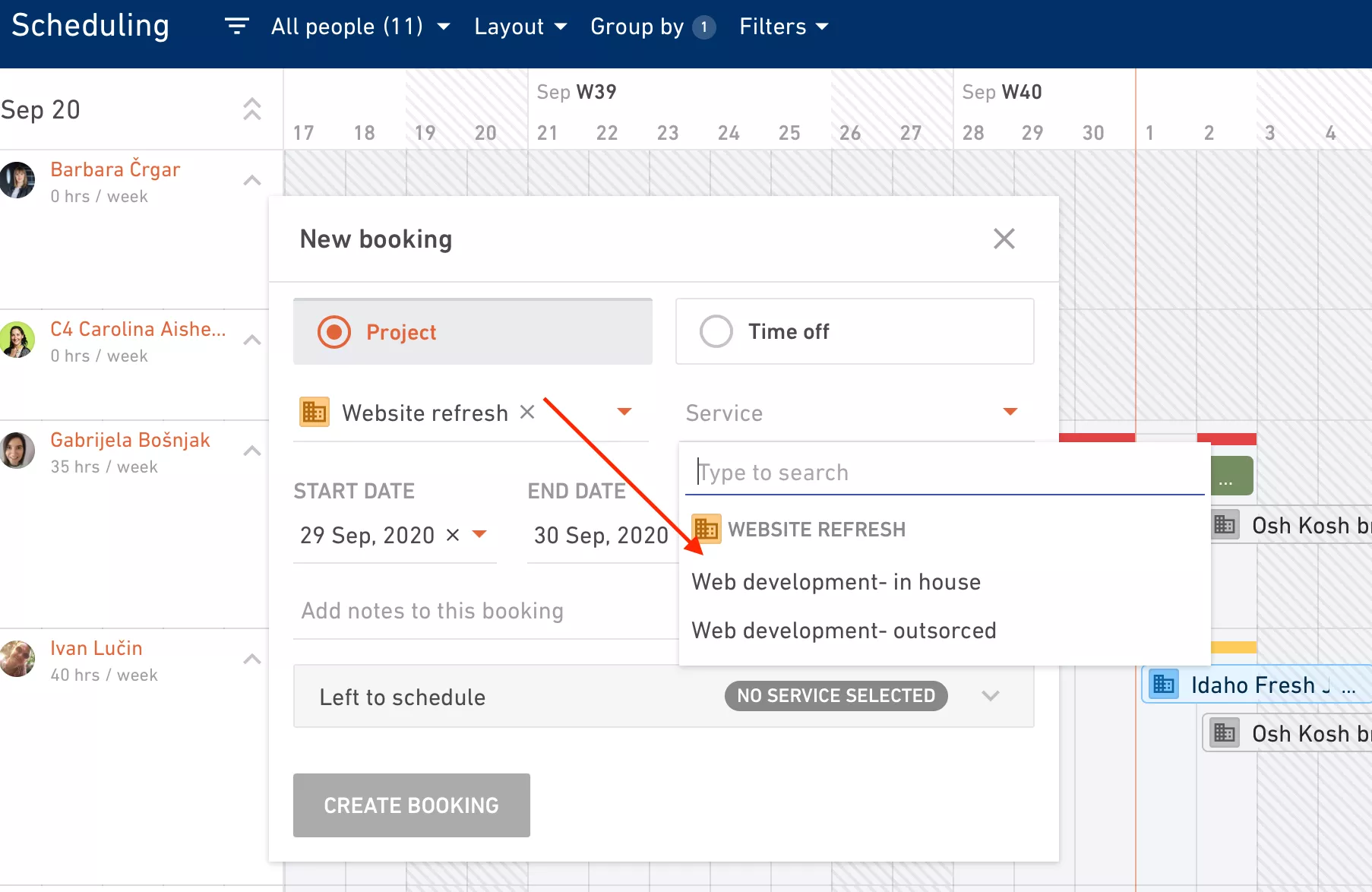
As soon as you book the resource and their time, the system factors their salary rate in the background and calculates the final profit margin.
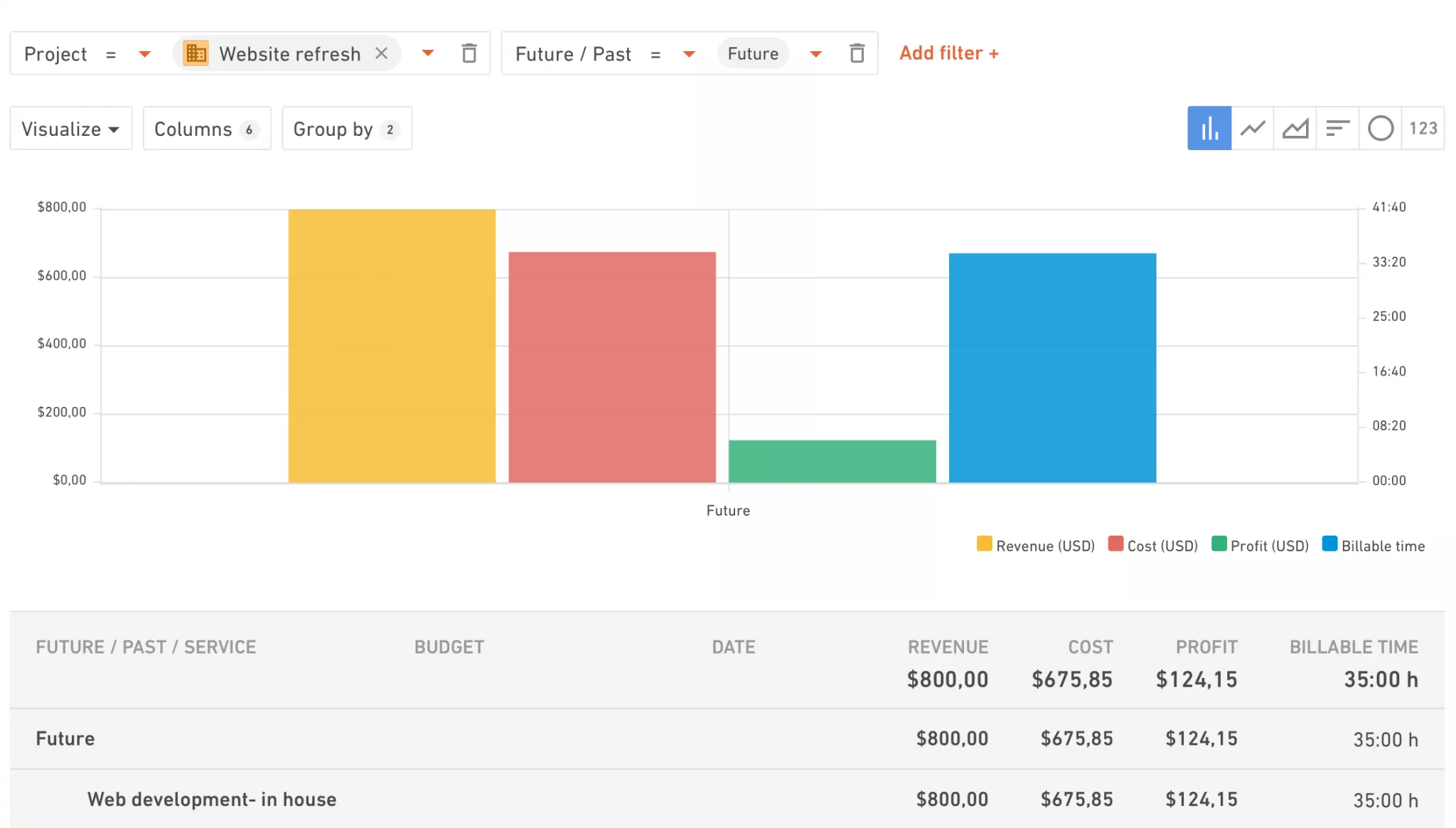
What happens if you hire a contractor instead?
Here’s a forecast for the same amount of time and resources with a contractor instead of an employee:
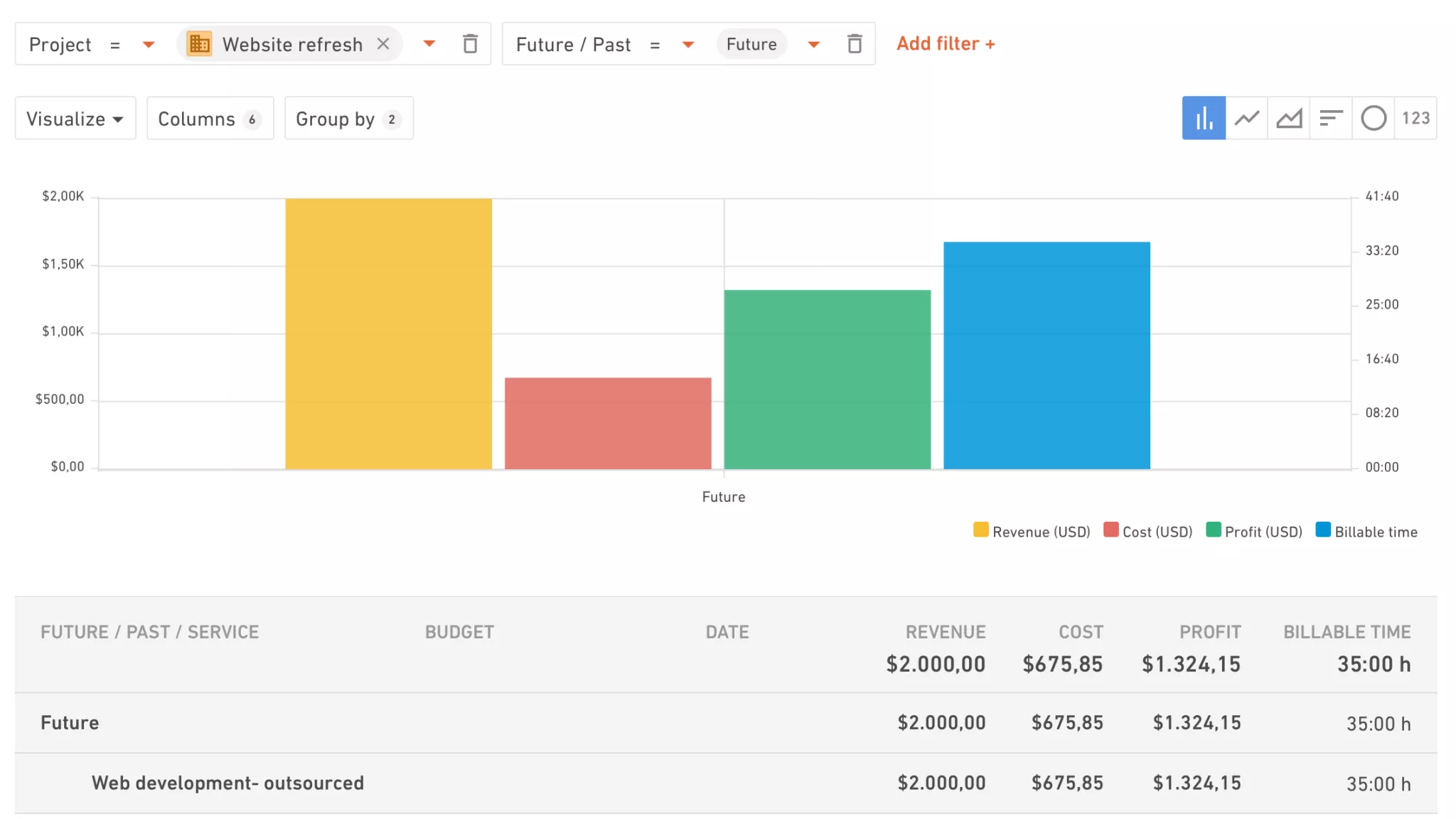
Quite powerful, right?
Extra tip on how to manage your work with contractors better: try scheduling your projects weeks in advance. It’ll give you a good starting point and you’ll realize sooner, rather than later, when you need to hire an extra hand. That way, you can negotiate terms better and influence the quality of the talent involved in the project.
If you want learn more about forecasting in Productive watch our webinar on that topic.
Equip Your Agency With the Right Data
You constantly need to make sure that you have enough work in the pipeline, and that can be stressful. Contractors can ease that stress. Nevertheless, you shouldn’t depend on them too much. Some things are best delivered in-house and that’s also how you develop your talent.
Still, making decisions is much easier when you’re equipped with the right data. And that’s what Productive is here for: to help you visualize that data and make those decisions.



